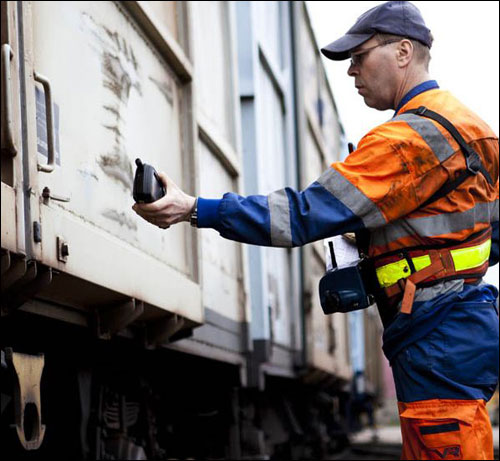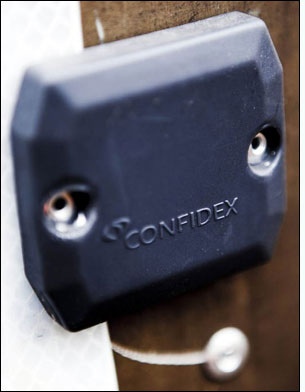Finnish state-owned railroad operator VR Group and its VR Transpoint subsidiary, Finland’s largest logistics services provider, are employing EPC Gen 2 RFID technology to track 10,000 rail-freight wagons, locomotives and passenger cars, thereby helping the company and its subsidiary to manage rail cars and work processes within its rail yards.
VR Group implemented radio frequency identification to improve the efficiency of its rail-yard processes, better manage rail-car inventory and maintenance orders, and provide improved customer service—for instance, by delivering detailed information to customers regarding which shipments have arrived, and when.
Mikko Särkkä, VR Group’s head of logistics IT, believes the application is the world’s first full-scale implementation of an EPC Gen 2 RFID system in the rail industry. The solution relies on Confidex‘s Ironside tags, protected by plastic housings measuring 8 millimeters (0.3 inch) think, that are read by 350 Psion Workabout Pro handheld readers. The system is currently operational at 50 locations throughout Finland. VR Group invested roughly €2 million ($2.8 million) in the project, for hardware, software and consulting.
VR Group attached two tags to each rail car on both sides, complying with the technical specification regarding interoperability for telematic applications for freight (TAF/TSI), as regulated by the European Railway Agency (ERA).
One advantage of the RFID system, Särkkä says, is that VR Transpoint personnel can now identify wagons automatically, and at a distance, by using the handheld readers—workers can walk alongside a train and use the devices to interrogate each rail car’s tags. As they do so, the wagons are identified and the information is automatically transferred to the logistics system. If, for instance, a train car is slated to be removed from one train and shifted to another, this information will be displayed on the employee’s screen. Likewise, after wagons have been shifted and a new train has been assembled in the yard, workers can confirm that the cars are located behind the correct locomotive, and in the intended order.
Prior to VR Transpoint’s adoption of the RFID system, this process involved manually using pen and paper, and took much longer to notify customers about which cars had arrived, as well as each wagon’s position on the train (for example, first, third or fifth).
Such information is vital for the companies receiving the goods, so that they can know whether a particular rail car will arrive with the front end or the back end facing forward (since cars can be connected on a train in either orientation). Since each of a car’s two RFID tags is encoded with a bit of data to indicate whether that tag was installed on the car’s left or right side, the system knows the direction in which each car is being pulled—that is, whether it is facing forward or backward.
The RFID system has also improved yard-management, by automating work orders, speeding up the process of reporting car defects and ensuring correct train composition. All work orders are digitally delivered to workers through the handheld devices at the time that they are required.
In the past, managers at individual sites assigned tasks to the employees at those locations, thus making the central oversight of work processes cumbersome, in addition to creating manual reporting tasks.
“The company had lots of people planning what would be done with each incoming and outgoing train, and giving manual work orders with pen and paper,” Särkkä explains. “Once the task was finished, those people entered the information into a database.”
Once all instructions regarding incoming and outgoing trains were automated, Särkkä says, the company was then able to consolidate such planning from 50 sites down to 14. He adds that the system has been well received by employees, since it simplifies work and adds no extra steps to the process.
Vilant Systems, a Helsinki-based provider of turnkey RFID solutions, has been serving as the project’s systems integrator, and is presently in talks with VR Group and its customers about potentially adding future applications that would rely on the tagged rail cars. Options include utilizing the tags to identify each rail car at weigh stations, conducting rail-yard inventory, and installing fixed reading terminals at customer sites, as well as at rail terminals.
Särkkä sees potential for the system, particularly by including supply chain and logistics partners in the RFID-based processes. “A harbor operator should be able to tell us electronically which cars are needed at which terminal,” he states. “The level of process automation is not so good yet, but by using RFID, we could automate more.”




